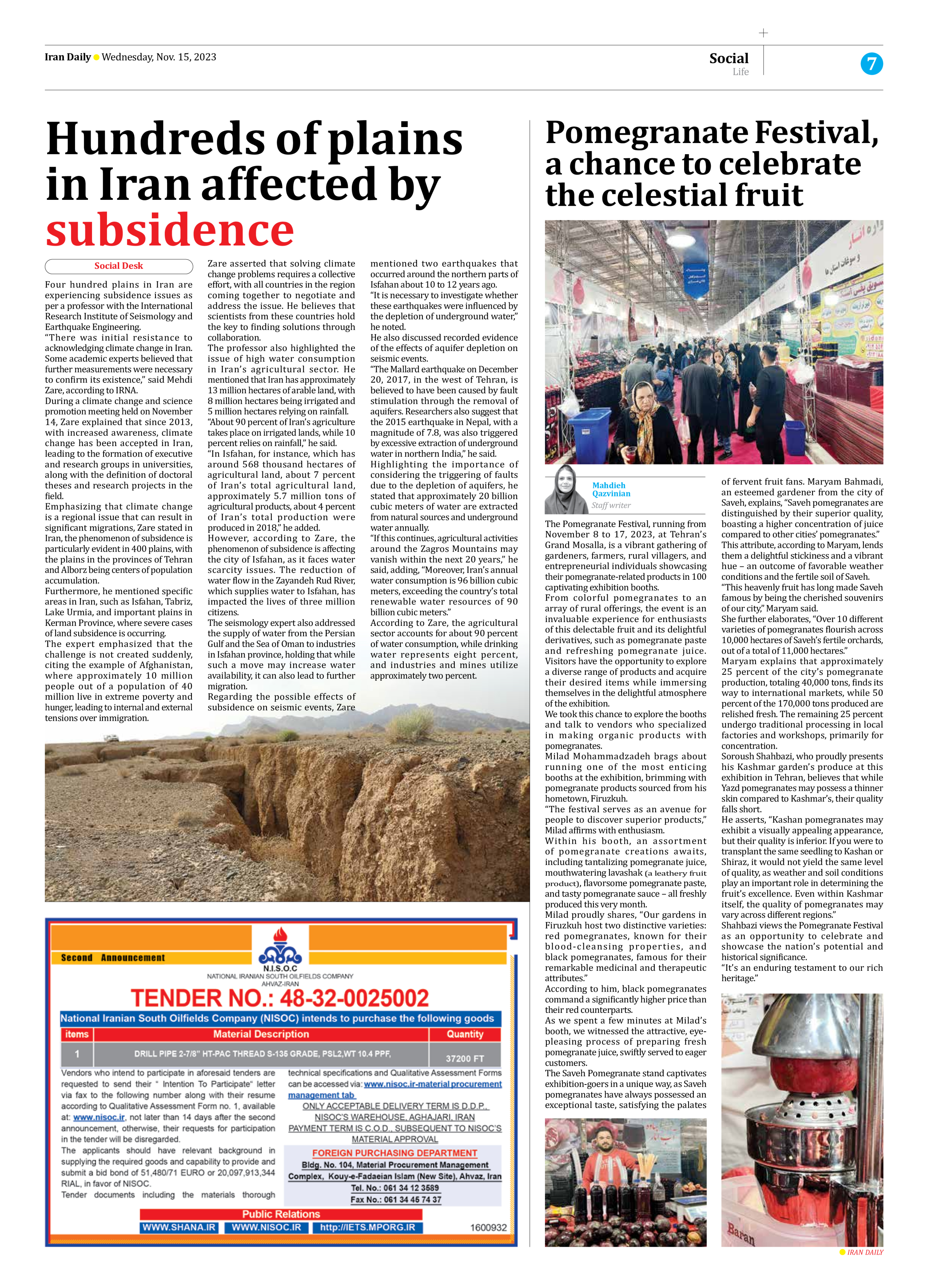
Hundreds of plains in Iran affected by subsidence
Four hundred plains in Iran are experiencing subsidence issues as per a professor with the International Research Institute of Seismology and Earthquake Engineering.
“There was initial resistance to acknowledging climate change in Iran. Some academic experts believed that further measurements were necessary to confirm its existence,” said Mehdi Zare, according to IRNA.
During a climate change and science promotion meeting held on November 14, Zare explained that since 2013, with increased awareness, climate change has been accepted in Iran, leading to the formation of executive and research groups in universities, along with the definition of doctoral theses and research projects in the field.
Emphasizing that climate change is a regional issue that can result in significant migrations, Zare stated in Iran, the phenomenon of subsidence is particularly evident in 400 plains, with the plains in the provinces of Tehran and Alborz being centers of population accumulation.
Furthermore, he mentioned specific areas in Iran, such as Isfahan, Tabriz, Lake Urmia, and important plains in Kerman Province, where severe cases of land subsidence is occurring.
The expert emphasized that the challenge is not created suddenly, citing the example of Afghanistan, where approximately 10 million people out of a population of 40 million live in extreme poverty and hunger, leading to internal and external tensions over immigration.
Zare asserted that solving climate change problems requires a collective effort, with all countries in the region coming together to negotiate and address the issue. He believes that scientists from these countries hold the key to finding solutions through collaboration.
The professor also highlighted the issue of high water consumption in Iran’s agricultural sector. He mentioned that Iran has approximately 13 million hectares of arable land, with 8 million hectares being irrigated and 5 million hectares relying on rainfall.
“About 90 percent of Iran’s agriculture takes place on irrigated lands, while 10 percent relies on rainfall,” he said.
“In Isfahan, for instance, which has around 568 thousand hectares of agricultural land, about 7 percent of Iran’s total agricultural land, approximately 5.7 million tons of agricultural products, about 4 percent of Iran’s total production were produced in 2018,” he added.
However, according to Zare, the phenomenon of subsidence is affecting the city of Isfahan, as it faces water scarcity issues. The reduction of water flow in the Zayandeh Rud River, which supplies water to Isfahan, has impacted the lives of three million citizens.
The seismology expert also addressed the supply of water from the Persian Gulf and the Sea of Oman to industries in Isfahan province, holding that while such a move may increase water availability, it can also lead to further migration.
Regarding the possible effects of subsidence on seismic events, Zare mentioned two earthquakes that occurred around the northern parts of Isfahan about 10 to 12 years ago.
“It is necessary to investigate whether these earthquakes were influenced by the depletion of underground water,” he noted.
He also discussed recorded evidence of the effects of aquifer depletion on seismic events.
“The Mallard earthquake on December 20, 2017, in the west of Tehran, is believed to have been caused by fault stimulation through the removal of aquifers. Researchers also suggest that the 2015 earthquake in Nepal, with a magnitude of 7.8, was also triggered by excessive extraction of underground water in northern India,” he said.
Highlighting the importance of considering the triggering of faults due to the depletion of aquifers, he stated that approximately 20 billion cubic meters of water are extracted from natural sources and underground water annually.
“If this continues, agricultural activities around the Zagros Mountains may vanish within the next 20 years,” he said, adding, “Moreover, Iran’s annual water consumption is 96 billion cubic meters, exceeding the country’s total renewable water resources of 90 billion cubic meters.”
According to Zare, the agricultural sector accounts for about 90 percent of water consumption, while drinking water represents eight percent, and industries and mines utilize approximately two percent.







